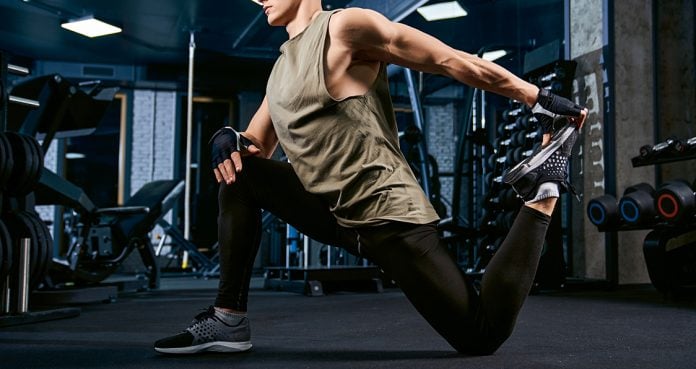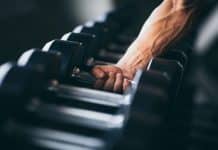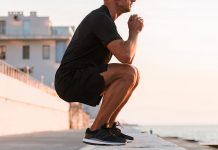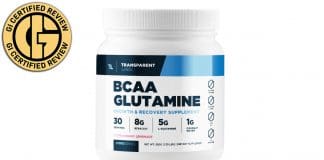
Take Your Gains To The Next Level With Better Mobility
Have you ever noticed almost every single person has a different way of performing the same exercise? Let’s take squats for example. While John might be able to squat with a full range of motion, Tom might physically only be able to go 3/4th of the way down.
Let’s assume both these people have the same height, weight, coach, train in the same gym, use the same weights, and have approximately the same strength. What do you think is causing the squat depth discrepancy?
Mobility is the culprit here. Squats are a compound lift and involve the recruitment of multiple muscles. A stiffness in any muscle group like the arms, upper or lower back, quads, hamstring, knees, shins, calves, or ankles could limit the mobility on the squats.
What is Mobility?
Mobility is the ability to move a muscle group through a range of motion in the joint socket with control. Mobility is how well and efficiently we move. When we talk about mobility we’re usually referring to joint mobility.
Joint mobility is the degree to which an articulation (where two bones meet) can move before being restricted by surrounding tissues- ligaments/tendons/muscles. Joint mobility directly determines your posture and movement.
Mobility is Not Flexibility
It’s crazy how many people confuse mobility with flexibility. Flexibility is your connective tissues’ ability to temporarily elongate. It is an element of mobility just like strength, coordination, and body awareness.
Flexibility can help improve your mobility but extreme flexibility (like you see in some manly videos) doesn’t boost your performance. So, stop trying the dwi pada sirsasana and be content with practicing the full splits.
Benefits of Optimal Mobility
There are a load of benefits when it comes to optimizing your mobility that you may not even think of. Let’s take a look.
Reduces Chances of Injury
Sadly, people get injured in the gym way too frequently. While there are various reasons why people get hurt, most of it could be boiled down to not being able to perform an exercise correctly due to a lack of mobility.
If you ask people what they felt during the exercise they got injured, most of them will tell you that they were uncomfortable right from the beginning of the exercise. Optimal mobility ensures that there is an equal distribution of stress throughout your working muscles which reduces your chances of an injury.
Improves Joint Health & Reduces Joint Pain
Regular mobility exercises act as lubricants for your joints, ligaments, and tendons and keep them working in optimal condition. The more you work on improving your joint mobility, the healthier and stronger the surrounding muscle tissues will get – helping boost joint health and elevating pain. Joint supplement ingredients have proven to be a big difference in performance and reducing inflammation.
Ignites Muscle Growth
Joint immobility hurts your gains in more ways than you can imagine. There is always at least one exercise you feel uncomfortable performing or can’t perform with the full range of motion. It is a sign that you lack mobility in that area.
For a long time, I had trouble performing behind-the-neck exercises like the lat pulldowns and military presses. After I worked on my posterior muscle mobility, I saw my strength, muscle mass, and quality shoot through the roof.
Improves Posture
Thanks to the modern lifestyle and now the work-from-home culture, we spend most of our time hunched over a laptop or looking down at our phone screens. It could be doing a lot for our career, but it surely isn’t helping improve our posture.
Constantly sitting causes your hip flexors to shorten, and your hamstrings to lengthen. This starts a chain reaction that causes anterior pelvic tilt and kyphosis. The next time you feel like Netflix and chilling, remind yourself – we are born hunters and gatherers.
How To Improve Your Mobility
So, with all of that being said, how can you improve your mobility? Are you just doomed to be immobile? What can you do?
Stretching
Active and static stretching exercises are some of the best ways of improving your mobility.
Static stretching (aka passive stretching) is the common type of stretching that most people are familiar with. It’s what comes to mind when someone talks about stretching.
It involves the use of an external force to elongate or stretch a muscle. In this type of stretching, force is usually generated through your own body weight or by pulling with your arms.
Active stretching is a dynamic form of stretching that involves the contraction of a muscle that is opposite to the muscle that is being targeted for the stretch. As an example, kicking your leg straight out in front of you would actively stretch the hamstrings in the leg that is moving. Most yoga poses are a form of active stretching.
Improve Your Breathing
Ever wondered why breathing is such a big part of almost all kinds of physically intensive activities? Start playing football or tennis, and you’ll be asked to learn to breathe to improve your endurance, join a gym, and you’re told to breathe in sync with your reps, and let’s just not begin talking about yoga.
Connecting your breath with your movement is thought to affect how efficiently you move. Slow and controlled breathing can increase the parasympathetic response which can help in relaxing your body and reducing overall tension.
Self-Myofascial Release
Self-myofascial release is a practice that uses tools like the foam roller and lacrosse balls to target the fascia. A fascia is a band or sheet of connective tissue beneath the skin which acts like a spider web around the muscles that attaches, stabilizes, encloses, and separates muscles and other internal organs and helps the muscles retain their shape.
The muscle fascia is also what keeps your muscles from growing bigger. The sensation of a muscle pump is actually your muscle fibers pushing against the fascia and trying to expand it. Tightly packed fascia can also be the reason behind tight joints and limited mobility. a foam rolling routine will be optimal for mobility and muscle development.
Mobility Exercises
If you’re having trouble performing specific exercises, it’d be best to work your joints and tendons in that same position. For example, you should hold a squat at the bottom of the movement and slowly move your knees and hip in circular motions to work on your ROM. You should then rock-and-roll while holding the squat to loosen up his shins, calves, and ankle joints.
A few other effective mobility exercises include walking hip openers, thoracic spine windmills on the floor, shoulder pass-throughs, and neck half circles. You should have at least one mobility day a week in your workout schedule to keep your joints, ligaments, and tendons in optimal condition.
Mobility Wrap Up
Overall, if you do not have good mobility, your ability to make it through exercises using a full range of motion may be hindered, which is less than ideal. That being said, be sure to focus on some mobility work!
Are you facing any mobility issues? Let us know in the comments below. Also, be sure to follow Generation Iron on Facebook and Twitter.

















